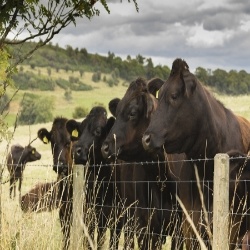 Livestock is an important asset to farmers, and having a well-set-up and secure fence isn’t an option – it’s a necessity. But when it comes to installing livestock fencing, there are many things that can go wrong. The process of installing a fence in order to protect livestock can be difficult, even to the most trained professionals. Here are seven common mistakes that are made when installing livestock fencing:
Livestock is an important asset to farmers, and having a well-set-up and secure fence isn’t an option – it’s a necessity. But when it comes to installing livestock fencing, there are many things that can go wrong. The process of installing a fence in order to protect livestock can be difficult, even to the most trained professionals. Here are seven common mistakes that are made when installing livestock fencing:
Corner Posts
This is often seen as the top mistake in fencing. The main issues are undersized posts and corner posts that aren’t set deeply enough into the ground. Additionally, corner posts that are set in sandy or soft soil may cause problems with stability and strength down the road. It’s important to be mindful of the fencing around the corner posts to ensure that it’s functional and secure.
Post Spacing
Another common problem with livestock fencing is spacing. Many fencers tend to use too many posts, which likely stems from experience with barbed wire where the standard is one post every rod length. However, with livestock fences, posts can be spaced up to 80-100 feet apart, although many fencers prefer to have posts spaced closer together at around 50-70 feet apart.
A Correctly Sized Energizer
Don’t make the mistake of choosing an energizer that is too small for the fence. As a rule of thumb, there should be one joule of output for every mile of fence. For example, if there is a total of six miles of fence, you would need a six-joule energizer.
Grounding
Grounding is one of the most important factors in an electrical fence, and when it comes to grounding, spacing is key. A ground rod is essentially an antenna that receives electrons that flow through the soil and back to the energizer, completing the circuit. The mistake that most people make is inserting all of the ground rods near the energizer. Instead, try properly spacing out ground rods throughout the entire fence.
Wildlife Friendly
It’s important to choose a fence that’s appropriate for the size of animals you have in the fence. Although it’s tempting to choose fences that can withstand the force of a moose, this often backfires. If you have larger livestock, consider choosing a fence that is flexible to avoid damage.
Gate Openings
In electrical fencing systems, it can be a challenge to create a gate system that conducts current. The best way to overcome this is to place a floating diagonal brace on either side of the gate opening.
Insulators
Many people make the mistake of having a steel insulator for their livestock fence. The danger in this is that you’re relying on the insulator to keep your fence from shorting out. Instead, try using flexible plastic or wood-plastic composite posts.
Don’t forget the fence fasteners. The correct way to fasten a livestock fence is different from the standard wood picket fence used in your homes. Want to learn more about our fence stapling system? View our free video, Beck Fence Stapling System
- Products
- Fasteners
- Staples
- Brads & Pins
- Collated Nails
- SCRAIL® Fasteners
- Tools
- Beck Systems
- Fasteners
- Innovations
- Applications
- Interior Applications
- Exterior Applications
- Industrial / In plant
- Miscellaneous
- About Us
- Service
- News & Events
- Contacts
.svg.png)
